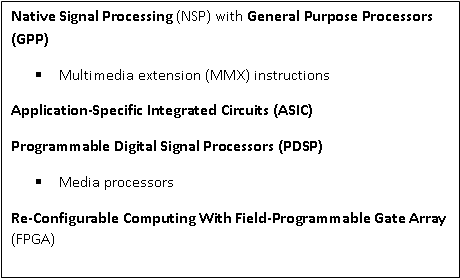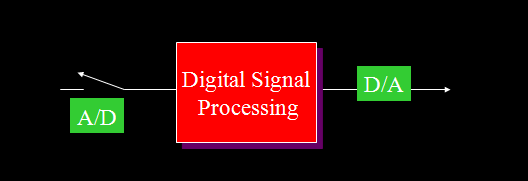VLSI Digital Signal Processing Systems
We all are aware that a Signal is a measurement of a physical capacity of the certain medium. While The ways to influence the signal in its original medium or an abstract representation is signal processing. A signal can be preoccupied as functions of time or spatial coordinates.
Types of Processing:
• Transformation
• Detection
• Filtering
• Estimation
• Recognition and classification
• Recording, archiving
• Coding (compression)
• Synthesis and reproduction
• Analyzing & Modeling
The below are the different signal processing applications:
-
Communications
Modulation/Demodulation -modem
Channel Coding
Channel Estimation, Equalization
Source Coding: Compression
-
Imaging:
Digital camera
Scanner
DVD , HDTV
-
Audio
Surround Sound
3D sound
-
Speech
Coding
Synthesis
Recognition
Translation
-
Virtual reality, animation
-
Control
Hard drive
Motor
What is Digital signal processing - DSP?
The signals that are generated via physical phenomenon are analog in that and their amplitudes distinct over the range of real and complex numbers. The domains which are continuous in time or space will process the analog signals and this requires dedicated special hardware. While the digital signal processing concerns processing signals using digital computers. There must be a continuous time or space signal sampled to give up countable signal samples. However, the real complex valued samples should be quantized to fit into internal word span.
How does it work?
The digital signal processing - DSP is to process the sampled signals from AD analog to digital converter and provide its output to the DA digital to analog converter to be altered back to physical signals.
There are many advantages over analog signal processing. These Digital signals are more robust than that of analog signals with a high opinion to temperature and process variation.
However, the accuracy of digital representations can be controlled better by varying the word length of the signals. Furthermore, these Digital Signal Processing techniques can call off the noise and interference while amplifying the signal. In contrast, both signal and the noise are amplified in analog signal processing. The digital signals can be easily stored and recovered, transmitted and received, processed and manipulated, all manually without any errors.
While analog signal processing is crucial for systems that are extremely high frequencies such as the radio frequency transceiver in wireless communications, or in the extremely low areas and low power systems such as micro machine sensors which are used to detect cracks and other stress-related material defects. You can find many complex systems that are realized digitally with high precision, high signal to noise ratio (SNR), repeatability, and flexibility too.
Implementation of DSP Systems & Platforms that support DSP Systems

While implementing the DSP systems you have to be careful and know the requirements. There should be real time processing done before a pre-specified deadline. As this helps to streamline the Streamed numerical data and get a sequential processing. When the user knew the requirements properly you will get fast arithmetic processing, high throughput, can able to know the output or the input of your data fast at any given time and this overall help you to manipulate your data very quick.






